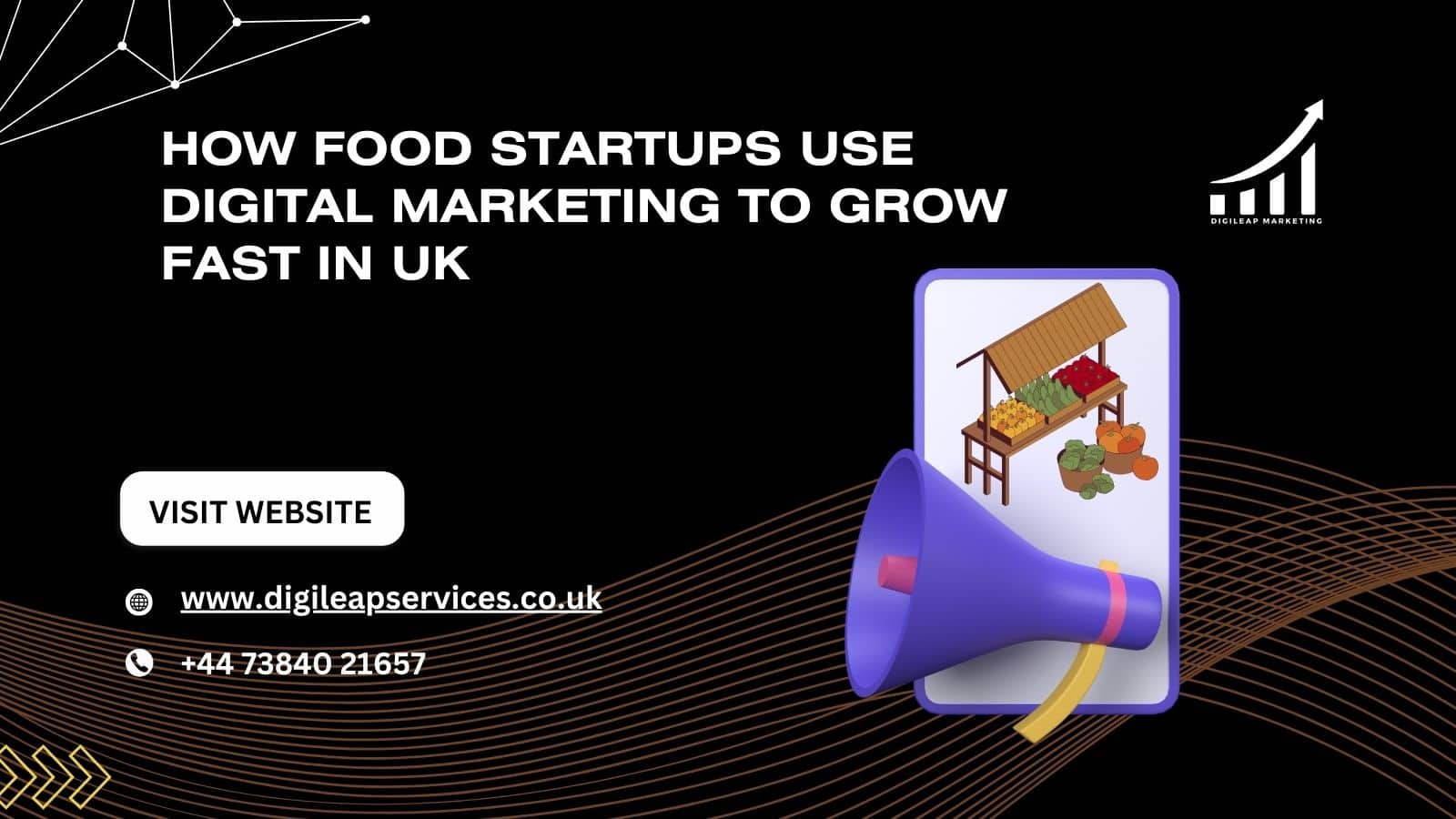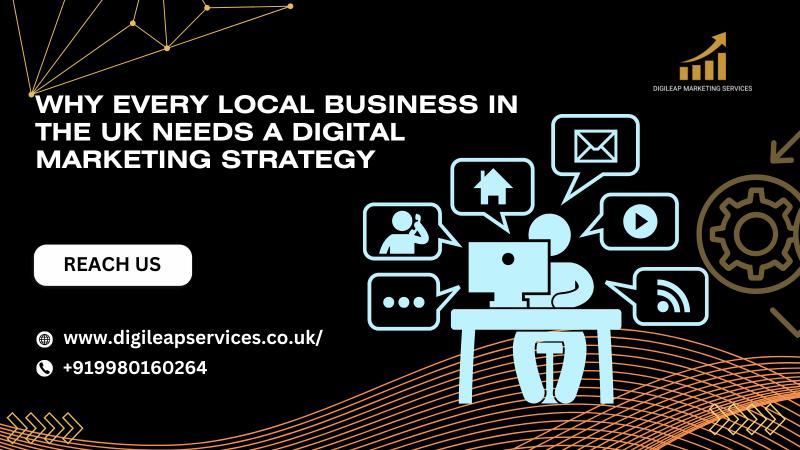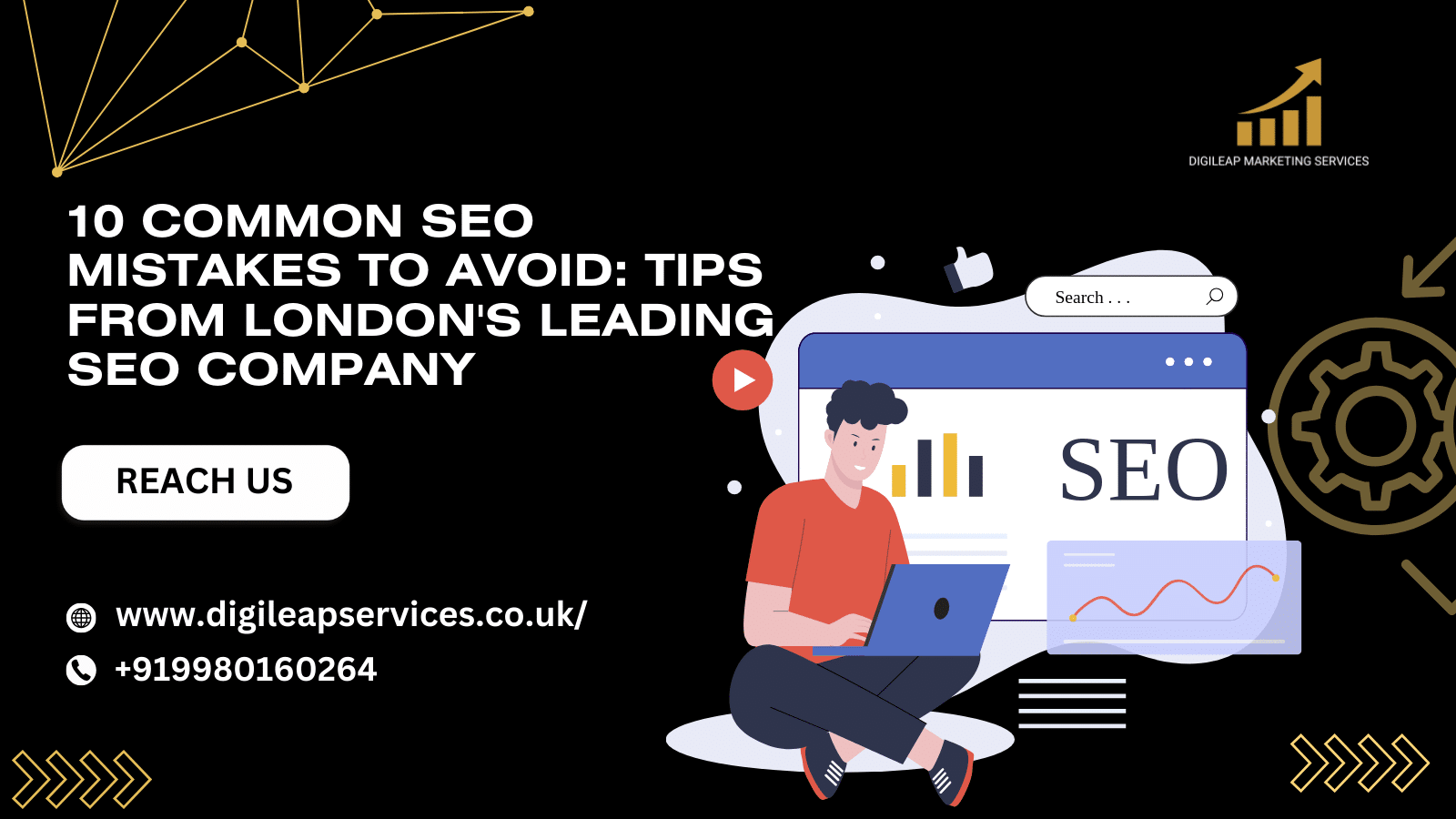How Food Startups Use Digital Marketing to Grow Fast in the UK
Let’s be honest—starting a food business in the UK? That’s not exactly a walk in the park. You’ve got stiff competition, growing prices, and clients who anticipate more than simply tasty bites. They want a story, a vibe, and a purpose to pick you. So, how do today’s food startups not just survive but grow fast?
The answer is no longer just great food. It’s digital marketing—smart, creative, and essential if you want to get noticed.
Don’t believe it? Well, Statista reports that the UK online food and grocery market hit £28.2 billion in 2023, and it’s only going up. That’s not just “big.” That’s massive. If you’re not showing up online, let’s be real… you’re practically invisible.
This guide breaks down the exact ways UK food startups are using digital marketing (yes, including some seriously cool tricks) to build buzz, attract loyal fans, and grow fast, like, surprisingly fast.
1. Branding That Grabs Attention
You’ve seen it—those food brands that seem to pop up everywhere. It’s not luck. It’s killer branding paired with digital smarts.
Looks Matter (Especially Online)
Your packaging? Your logo? Your Insta grid? It’s all a segment of the show. Some time recently somebody bit into your item; they’ve as of now judged you based on what they see. Today’s new businesses utilize strong colors, clean formats, and scroll-stopping visuals to stand out on online product listings like Instagram, TikTok, and even Uber Eats.
Need inspiration? Take a peek at Neat Burger—a UK plant-based chain backed by Lewis Hamilton. It’s not just about burgers. It’s a whole identity.
Your Story Sells
People love a good backstory—especially in food. Maybe you started your vegan curry line after your grandma’s recipe. Maybe you’re two best mates who ditched banking to make kimchi. Whatever it is, tell it. Share bits on your website, post mini-stories on Reels, or drop casual anecdotes in your email newsletters.
“Marketing is no longer about the stuff you make but about the stories you tell.” – Seth Godin
Work with Humans, Not Celebs
Weird truth: micro-influencers often drive more engagement than big names. Think 3,000–10,000 followers—not millions. UK startups are teaming up with these niche creators who post about food, fitness, or sustainability. They’re more trusted, more relatable, and guess what? Way more affordable.
According to Statista, UK micro-influencers have a 3.86% engagement rate, which honestly blows the bigger accounts out of the water.
And yeah, this is the kind of stuff Digileap has helped other UK startups implement without needing giant marketing budgets.
2. Make It Easy to Find You (Like, Really Easy)
You’ve got amazing food. Awesome. But here’s a question: Can people actually find you online? If someone searches “best vegan wrap in Manchester,” and you’re not popping up—yeah, that’s a problem.
SEO Isn’t Just for Tech People
You don’t need to be a nerd to win with Search Engine Optimization (SEO). At the very least, your website should include your location, food type, and popular keywords people are actually typing into Google. For example: “organic lunch bowls in Bristol”—you get the idea.
Even better? Write blogs answering stuff people search for like “how to eat gluten-free in London” or “top healthy lunch options near Soho.”
Tip: Use AnswerThePublic to find actual questions people are Googling.
Reviews Build Trust (Fast)
When’s the last time you tried a new place without checking reviews? Yeah, us neither. Startups that encourage happy customers to leave honest reviews on Google, Yelp, or TripAdvisor grow faster—because people believe other people.
And here’s a stat for the skeptics: 87% of UK consumers read online reviews before visiting a local business (Statista).
So yeah, that one glowing review about your buttermilk fried chicken? Worth gold.
Don’t Ignore Your Website
Here’s the deal: your website doesn’t need to win awards. But it does need to load fast, look clean on mobile, and make ordering easy. Keep your menu right on the homepage. Add a clear “Order Now” button. Make your contact info stupidly easy to find.
Test it on your phone. If it annoys you, it’ll annoy your customers too.
3. Turn Clicks Into Real-Life Customers
Okay, so people are finding you. Nice. But are they actually buying? Or just scrolling and bouncing? This is where smart digital marketing turns curiosity into sales.
Email Still Works (If You’re Not Boring)
Think email marketing is dead? Think again. It’s one of the highest-ROI tools out there. But don’t send the same boring template every week. Mix it up. Share new menu drops, behind-the-scenes updates, or even food fails (people love those).
Pro tip: Use Mailchimp or ConvertKit to automate and personalise your emails. And keep it short—nobody has time for an essay.
According to Statista, email marketing brings in a 36:1 ROI on average. That’s £36 for every £1 spent. Not bad, right?
Paid Ads: Don’t Fear ‘Em
Running ads doesn’t mean blowing your whole budget. UK food startups are using Facebook and Instagram ads to target locals by postcode, age, interests, and even dietary preferences.
Say you sell keto cookies in Brighton—you can target people in Brighton who follow keto hashtags. It’s that specific.
Start small. Try £50 and test what happens. Then scale what works.
Loyalty—But Make It Digital
Those old punch cards? They’re cute… but kind of outdated. Try using digital loyalty tools like Smile.io, Yotpo, or even a simple rewards page on your site.
Give points for orders, referrals, reviews, and social shares. Your customers will love it—and they’ll come back more often.
“Make it easy for people to say yes—and even easier to come back.” – Every smart marketer ever
4. Use Data Like a Chef Uses Salt
Here’s something most new founders skip: analytics. But data isn’t scary. It’s just feedback—like a friend who tells you your hummus needs more lemon.
Track What’s Working
Utilize Google Analytics to see which pages individuals visit most, how long they remain, and where they drop off. Are they all going to your brunch page but not ordering? Maybe the checkout’s clunky.
Little tweaks (like changing a button or headline) can boost conversions without spending a penny on ads.
A/B Testing = Big Wins
Try two versions of an email subject line. Test two types of Instagram captions. See what actually works.
For example:
“Our New Vegan Lasagna Is Here” vs.
“Guess What Just Hit the Menu (Hint: Vegan + Cheesy AF)”
One might pull 3x more clicks. But you’ll never know unless you test.
Watch How People Use Your Site
Use heatmap equipment like Hotjar or Microsoft Clarity to watch how users scroll, where they click on, and where they get caught. It’s weirdly pleasant—and fantastically useful.
5. Ride the Trends Without Selling Out
Some trends are just noise. Others? Total game-changers. Smart food startups stay flexible enough to jump in—but only when it fits.
Keep It Local, Keep It Real
More UK customers are asking: Where’s this from? Show them. Use local suppliers, talk about your farming partners, or highlight low-waste packaging.
“Sustainable” isn’t just a buzzword—it’s a buying decision.
Go Viral (When It Makes Sense)
Remember the whipped coffee craze? That wasn’t just for fun. Brands who jumped on it early got millions of views. But don’t force it. If it doesn’t fit your vibe, skip it.
If it does? Film a short Reel, post it with trending audio, and engage in the comments.
Create FOMO with Limited Offers
Have you ever seen “Only 12 left!” or “Weekend special”? That’s a short marketing, and it works like an appeal. Offer restricted-time dishes, collab menus, or surprise packing. Promote them with timers on Instagram Stories or email reminders.
6. Create Content That Feeds People’s Feeds
We’re in the scroll economy. Attention is short, and you’re not just competing with restaurants—you’re up against cat videos and memes.
Show Up With a Personality
Your brand needs a voice. Witty? Kind? Bold? Whatever it is, stick with it across social, web, and even packaging. People follow brands that feel like people—not corporations.
Let Customers Create With You
Ask followers to tag you in their food pics, run a contest for best at-home plating, or feature them on your feed. This user-generated content not only builds trust—it’s free marketing.
“People trust other people more than they trust brands.” – Obvious but true
Educate and Entertain
You have to remember that not every post out there needs to sell. always try to add some chef’s tips and kitchen hacks, ingredient spotlights, or gastronomic anecdotes, ads are needed if people like your content, there will be an organic growth, which will ultimately lead to the growth of the business.
Conclusion: It’s Not Just Food—It’s Strategy
If you’re running a food startup in the UK, remember this: amazing food is just the start. It’s digital marketing that gets it discovered, shared, loved, and bought.
And you don’t require a million-pound budget or a monster group. You just have to begin where you are—build your brand, learn your audience, and change things as you go.
Need a hand? Digileap has helped UK startups do exactly that—build digital strategies that move the needle.
TL;DR
Food startups in the UK are growing fast by mastering digital marketing. Through SEO, social media, influencer marketing, geo-targeted ads, and content-rich storytelling, these brands build visibility, engage their audience, and scale efficiently.
Want to replicate their success?
Let Digileap Help You Grow
At Digileap UK, we specialize in helping food startups rise fast with tailored digital marketing strategies—from content creation to paid campaigns, automation, and analytics. Let’s serve your brand the audience it deserves.







